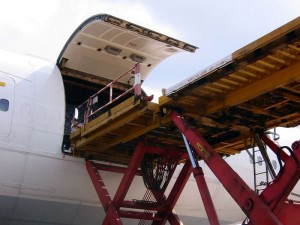Air cargo transport is riding high worldwide. This is vouched by the global air cargo figures, which have grown by 4.1% in April 2018, as compared with the same month the previous year. According to the International Air Transport Association (IATA), this trend is set to continue, with moderate growth.
There are several reasons behind these data, one of which is unquestionably the 5.1% rate of growth in the global air cargo transport capacity during the same period, surpassing demand for the second time in 21 months. These data have been provided from the IATA, forecasting 4% growth in the sector for the 2018 financial year.
However, the association is wary of rising oil prices and the rise of protectionist rhetoric, urging for the opening up of borders both to individuals and to trade.
Despite some differences, all regions reported year-on-year growth in air cargo transport. Latin America leads the way, with growth of 10.6% year-on -year, followed by: The Middle East (+7.3%), Africa (+5,6%), Asia Pacific (+3.9%) and North America (+3.2%). In last place is Europe, with growth of 2.4%, although this figure is double the rate of growth from the previous month.
Cargo yield increase
According to data from WorldACD, a company providing market analytics from the air cargo sector, 2018 will see a good level of growth in terms of cargo volume, as well as in terms of its performance, which will be even better. The report mentions serious market growth based on global air cargo performance in April 2018, up from 2% compared to March, and 16% year-on-year growth.
Cargo demand during the first quarter of 2018 grew by 5.6%, according to WorldACD, “compared to 4.6% growth in kilos, demonstrating the continued growth of the average air courier distance, despite being lower that a year ago.”
The report highlights the very notable 17% year-on-year increase in pharmaceutical products as well as the 11% rate of growth in hi-tech shipments. However, growth for perishable goods, which constitute the largest specialised cargo category, lagged behind the global average of 4%.
Excellent prospects in Spain
Air cargo transport in Spain kicked off 2018 with excellent figures, considering the growth already experienced in the previous period. The AENA network therefore continues to grow in terms of air cargo, an upward trend that is set to continue.
Air cargo across the Spanish airport network grew by 13.8% in the first quarter of 2018, following the handling of a total of 235.9 million, yet another historical record in this period, according to data provided by AENA.
In terms of ranking, Adolfo Suárez Madrid-Barajas airport grew by 13% in the first quarter with 122.5 million kilos, followed by Barcelona-El Prat airport with 38.1 million kilos (+10.1%). In third place was Zaragoza, with 37.7 million kilos (+31,8%), followed by Vitoria, with 15.5 million kilos (+9,6%). Of particular note is how Zaragoza airport is dramatically catching up with Barcelona airport, this latter also enjoying positive growth.
The total cargo handled nationwide grew by 3.82% between January and March, reaching 32.2 million kilos. International cargo, meanwhile, grew by 15.55%, reaching 203.74 million kilos.
The only negative point is found further on down the ranking, with only Tenerife Norte (-1.7%), Palma de Mallorca (-1.1%), Alicante-Elche (-41,7%); and Tenerife Sur (-14%) closing the quarter in negative figures. This means that the main airports across the AENA network recorded positive traffic figures in the period between January and March, good news that is set to continue.


